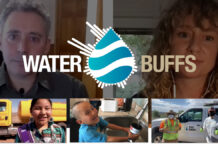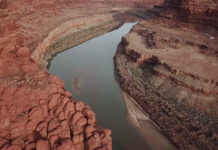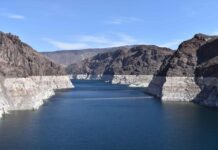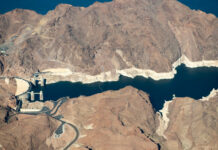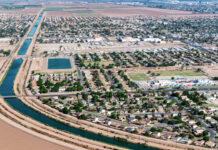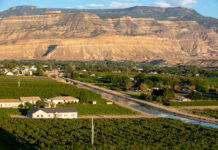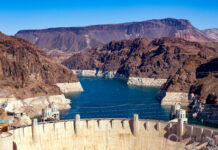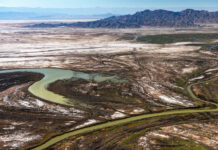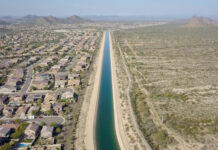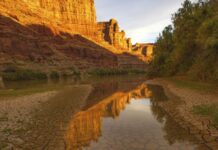Solving water insecurity on the Navajo Nation – Water Buffs Podcast ep. 7 – Kaitlin...
About one-third of Navajo Nation residents lack running water in their homes and water pollution remains a serious issue in the region. We talk to Kaitlin Harris of DigDeep’s Navajo Water Project about solutions to these pressing problems.
Crisis on the Colorado Part I: The West’s Great River Hits Its Limits– Will...
As the Southwest faces rapid growth and unrelenting drought, the Colorado River is in crisis, with too many demands on its diminishing flow. Now those who depend on the river must confront the hard reality that their supply of Colorado water may be cut off.
As drought shrinks the Colorado River, a Southern California giant seeks help from river...
Metropolitan Water District's water recycling proposal builds momentum amid increasingly dry conditions.
Crisis on the Colorado Part II: On a Water-Starved River, Drought Is the New...
With the Southwest locked in a 19-year drought and climate change making the region increasingly drier, water managers and users along the Colorado River are facing a troubling question: Are we in a new, more arid era when there will never be enough water?
A quiet revolution: Southwest cities learn to thrive amid drought
Southwestern U.S. cities have embraced innovative strategies for conserving and sourcing water in a changing climate.
Crisis on the Colorado Part III: Running Dry– New Strategies for Conserving Water
Communities along the Colorado River are facing a new era of drought and water shortages that is threatening their future. With an official water emergency declaration now possible, farmers, ranchers, and towns are searching for ways to use less water and survive.
Once a showcase of American optimism and engineering, Hoover Dam faces new power generation...
The long-term drying of the American Southwest poses a gathering and measurable threat to hydropower generation in the Colorado River basin.
Should Lake Mead, the reservoir formed by Hoover Dam,...
Crisis on the Colorado Part V: Bringing New Life to a Stressed River
The Colorado River has been dammed, diverted, and slowed by reservoirs, strangling the life out of a once-thriving ecosystem. But in the U.S. and Mexico, efforts are underway to revive sections of the river and restore vital riparian habitat for native plants, fish, and wildlife.
Crisis on the Colorado Part IV: In Era of Drought, Phoenix Prepares for a...
Once criticized for being a profligate user of water, fast-growing Phoenix has taken some major steps — including banking water in underground reservoirs, slashing per-capita use, and recycling wastewater — in anticipation of the day when the flow from the Colorado River ends.
How climate change is redesigning Canyonlands National Park
A warming climate has been linked to human activity around the world, and has affected the Colorado River System as well. The impacts are substantial, from reduced water flows, threats to indigenous species and the influx of new invasive species along the river system.



